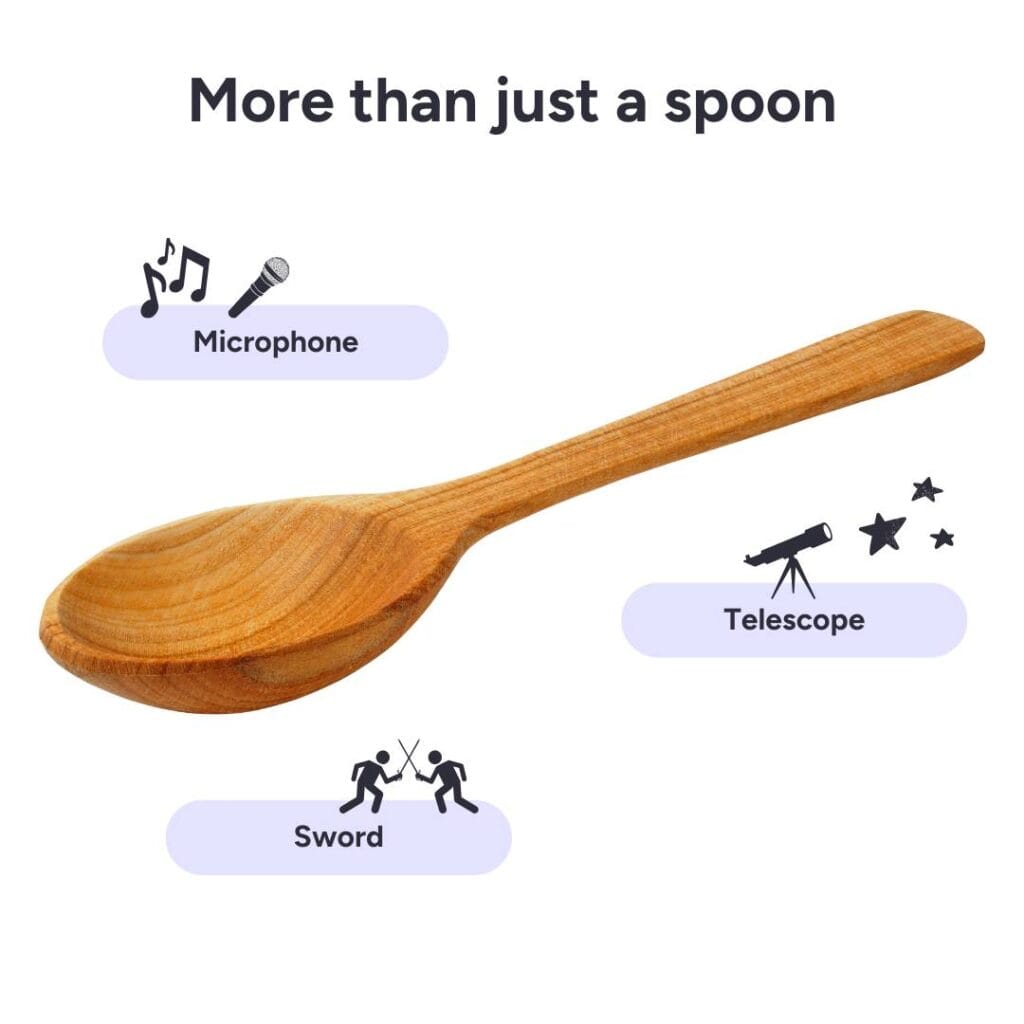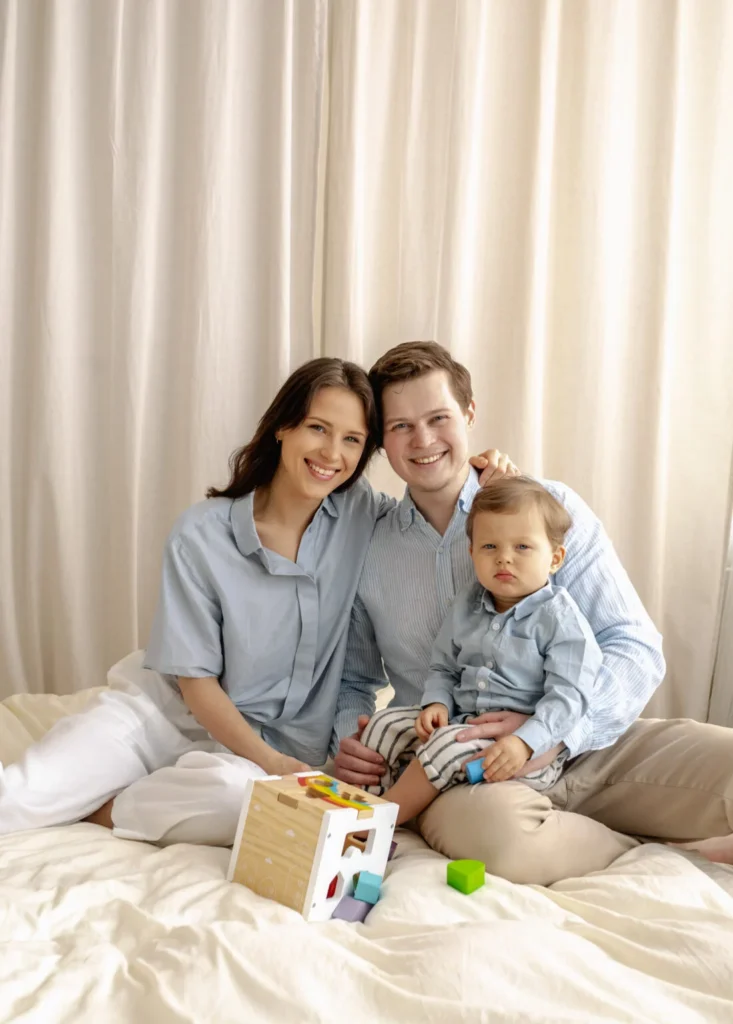Let me tell you a story about the day I realized I might be in the wrong business.
There I was, surrounded by mountains of colourful, beeping, flashing “educational” toys. I’d spent months testing these for Liledu, the toy company I’d founded. And then my nephew toddled in, took one look at my toy paradise, and made a beeline for… my kitchen drawer.
For the next hour, he was completely engrossed with a wooden spoon.
That spoon became a microphone (future talk show host?), a sword (en garde!), and even a telescope (that didn’t work out so well, but A for effort, kid).
And just like that, my perspective on toys did a complete 180.

The Great Toy Misconception
Here’s the thing: we’ve all bought into this idea that to be a good parent, we need to surround our kids with “educational” toys. You know, the ones that promise to turn your toddler into the next Einstein or Picasso.
But let’s be real for a second. How many of those toys are actually being played with? And how many are just making your living room look like a clearance sale?
At Liledu, we decided to put this to the test. We unleashed thousands of toys on our toughest critics: kids aged 0-2. (Side note: my living room looked like a toy store had exploded for months. I’m still finding tiny pieces in weird places.)
The results? Well, they were humbling, to say the least.
90% of these toys kept kids interested for about… wait for it… 5 minutes. Yep, you read that right. Five. Minutes.

And here’s the kicker: often, the box was more interesting than the toy itself. (Note to self: maybe we should just start a cardboard box company? 🤔)
The Spoon Theory of Play
Remember that wooden spoon? Turns out, it’s not just for stirring pasta or winning impromptu sword fights with your spouse.
That humble spoon can teach a kid about:
- Hot and cold (stick it in ice cream, then tea – mind blown!)
- Object permanence (peek-a-boo with a spoon is apparently hilarious)
- Cause and effect (banging it on different surfaces makes different sounds – and different levels of parental eye-twitching)
- Fine motor skills (try picking up peas with a spoon – it’s not just frustrating for kids)
The key ingredient? Your imagination (and maybe some patience when they inevitably try to ‘feed’ the cat with it).

Quality Over Quantity: The Liledu Philosophy
So, armed with this earth-shattering spoon revelation, we went back to the drawing board at Liledu.
We cherry-picked the toys that actually got kids excited. The ones that had them coming back for more, day after day. (Trust me, watching a 1-year-old’s eyes light up over a toy is better than any coffee for keeping you going through product testing.)
But we didn’t stop there. We created digital play guides for each toy. Think of them as cheat codes for unlocking your inner Mary Poppins.
These guides break down:
- Why we chose this toy (beyond “it doesn’t make us want to pull our hair out after hearing it for the 100th time”)
- What skills it’s secretly teaching your kid (usually way more than even the manufacturer realized)
- Fun activities and challenges you can do together (because let’s face it, sometimes we all need a little help in the creativity department after a long day)
Embracing the Chaos (aka Every Kid is Different)
Now, I’m going to let you in on a little secret: we don’t always get it right.
Shocking, I know. But here’s the deal – every kid is unique. What captivates one child might be totally ignored by another. (I learned this the hard way after confidently gifting the same toy to twin cousins. Rookie mistake.)
That’s why we offer free exchanges if a play kit doesn’t hit the mark. Yes, it’s expensive for us. Yes, our accountant gives me the side-eye every time we talk about it. But it’s crucial for delivering on our promise: meaningful play experiences for every child.
The Liledu Mission: Collect Memories, Not Toys
At the end of the day, we’re not just shipping boxes of toys. We’re delivering opportunities for giggles, for wide-eyed wonder, for those magical “aha!” moments.
We want to declutter your living room and fill it with imagination instead. We want to turn everyday moments into learning adventures. And most importantly, we want to help you create memories that last way longer than the battery life of any toy.
In a world that’s always shouting “More! More! More!”, we’re the crazy ones saying, “Hey, maybe less is actually more.” Less clutter, more play. Less pressure, more fun.
Over to You, Parents!
So, fellow adventurers in the wild world of parenting, I want to hear from you:
- What’s the weirdest thing your kid has turned into a favorite toy?
- How have you MacGyver-ed an everyday object into a learning experience?
- Any hilarious stories of ‘educational’ toys gone wrong?
Share your stories in the comments. Let’s laugh together, learn together, and maybe, just maybe, find the extraordinary in the ordinary.
Remember, at the end of the day, the most valuable toy isn’t the one with the fanciest label or the highest price tag. It’s the one that sparks joy, curiosity, and connection.
Now, if you’ll excuse me, I have a very important date with a 2-year-old and a wooden spoon. We’re going on an adventure! 🥄✨


